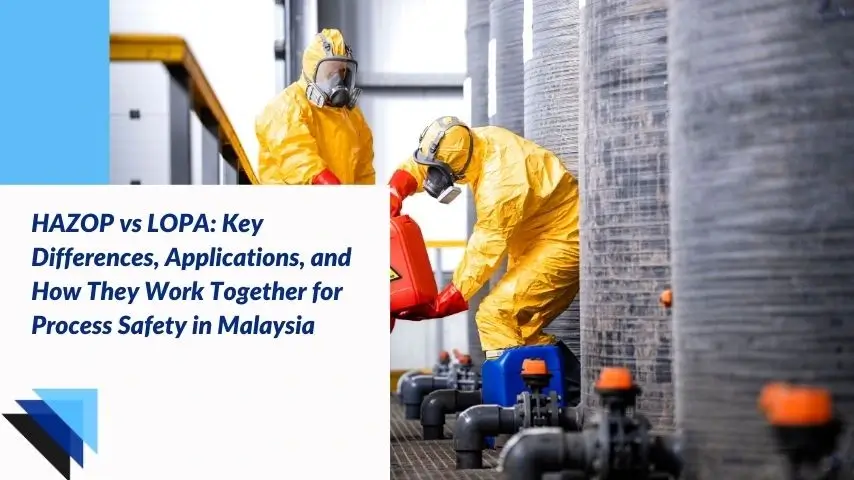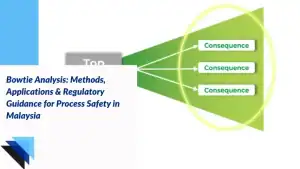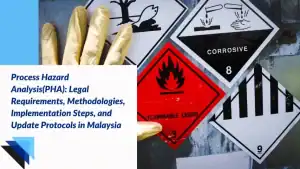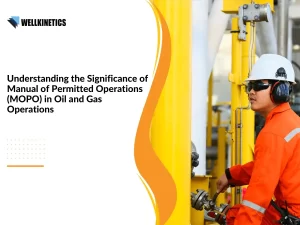Understanding the distinction between HAZOP (Hazard and Operability Study) and LOPA (Layer of Protection Analysis) is crucial for maintaining operational excellence and regulatory compliance in Malaysia’s process safety landscape. HAZOP and LOPA are complementary safety assessment tools that serve different yet interconnected purposes in process safety management. While HAZOP is a systematic, team-based approach to identify potential hazards and operational problems, LOPA provides a detailed analysis of protection layers needed to prevent major incidents.
Are you struggling to determine which methodology best suits your facility’s safety requirements? Or perhaps you’re wondering how to effectively integrate both approaches?
In this comprehensive guide, we’ll cover:
- Key differences between HAZOP and LOPA methodologies
- Integration strategies for enhanced risk assessment
- Malaysian compliance requirements and industry best practices
- Real-world applications
Let’s dive deep into these essential process safety tools and discover how they can strengthen your facility’s safety framework.
Boost Your Safety with Professional Risk Assessments
Ensure compliance and operational safety by integrating HAZOP and LOPA into your risk management strategies.
- What Role Do Process Safety Management Tools Play in Identifying and Controlling Hazards in Industrial Processes?
- What Is HAZOP and How Is It Used in Process Safety Management in Malaysia?
- What Is Layer of Protection Analysis (LOPA) and How Does It Build Upon HAZOP?
- How Do HAZOP and LOPA Work Together for Effective Process Safety Management?
- What Are the Key Process Safety Regulations in Malaysia?
- How Do Best Practices in HAZOP and LOPA Enhance Safety Management Across Industries?
- How Wellkinetics Can Help
What Role Do Process Safety Management Tools Play in Identifying and Controlling Hazards in Industrial Processes?
Process safety management tools play a crucial role in identifying, evaluating, and controlling potential hazards in industrial processes. These sophisticated methodologies have evolved significantly since major industrial incidents like Seveso (1976) and Bhopal (1984), shaping modern safety practices.
How Have Process Safety Tools Evolved to Prevent Accidents and Ensure Compliance?
The development of process safety tools has been driven by the need to prevent catastrophic industrial accidents. These tools have transformed from simple checklists to comprehensive analytical frameworks that help organizations maintain safer operations and comply with stringent regulations.
What Are the Key Elements of Modern Process Safety Tools?
Modern process safety tools incorporate several essential elements:
- Systematic hazard identification
- Risk assessment methodologies
- Protection layer analysis
- Documentation requirements
- Implementation guidelines
- Performance monitoring systems
What International Standards and Regulations Govern Process Safety Tools?
Process safety tools are governed by international standards and regulations including:
- OSHA Process Safety Management (PSM)
- EPA Risk Management Program (RMP)
- IEC 61508/61511 Standards
- Seveso III Directive (European Union)
How Can Process Safety Tools Be Effectively Integrated for Optimal Safety?
Effective implementation requires seamless integration of various safety tools. This integrated approach ensures:
- Comprehensive hazard coverage
- Consistent risk assessment
- Efficient resource allocation
- Clear communication channels
- Systematic documentation
In Which Industries Are Process Safety Tools Commonly Applied?
These tools find widespread application across various sectors:
- Chemical processing
- Oil and gas operations
- Pharmaceutical manufacturing
- Power generation
- Food processing industries
RELATED: HAZOP in Oil and Gas Industry: How to Prepare, Conduct, and Improve Safety in Malaysia
What Is HAZOP and How Is It Used in Process Safety Management in Malaysia?
HAZOP (Hazard and Operability Study) is a systematic and structured approach to identifying potential hazards and operational problems in process systems. This methodology has become a cornerstone of process safety management in Malaysia’s industrial sector.
How Does the HAZOP Team Use Guidewords to Identify Process Deviations?
The HAZOP study brings together a diverse team of experts, including process engineers, operators, safety specialists, and maintenance personnel. This multidisciplinary approach ensures comprehensive hazard identification through different perspectives and expertise.
The analysis follows a systematic examination of process parameters using guidewords like:
- More/Less (Flow, Pressure, Temperature)
- No/None (Flow, Reaction)
- Reverse (Flow Direction)
- Other Than (Wrong Material)
- As Well As (Contamination)
Each parameter is evaluated against these guidewords to identify potential deviations from normal operating conditions. The team then assesses causes, consequences, and existing safeguards for each deviation.
RELATED: How to Conduct a HAZOP Study: A Comprehensive Guide for Malaysian Industries
Why Is Documentation Important for HAZOP and Regulatory Compliance?
Proper documentation is crucial for HAZOP effectiveness and regulatory compliance in Malaysia. The study must record:
- Process node descriptions
- Parameter deviations analyzed
- Identified causes and consequences
- Existing safeguards
- Risk rankings
- Recommended actions
Follow-up actions are tracked through:
- Action item registers
- Implementation timelines
- Responsibility assignments
- Verification procedures
The documentation serves as evidence of due diligence for regulatory bodies and provides a reference for future process modifications or risk assessments. Regular reviews ensure that identified actions are implemented and remain effective.
RELATED: HAZOP vs. HAZID: Key Differences, Applications, and When to Use Each in Malaysia
What Is Layer of Protection Analysis (LOPA) and How Does It Build Upon HAZOP?
Layer of Protection Analysis (LOPA) is a semi-quantitative methodology that evaluates the effectiveness of protection layers designed to prevent or mitigate hazardous scenarios in process facilities. This systematic approach builds upon HAZOP studies to determine if existing safeguards are sufficient.
What Protection Layers Does LOPA Evaluate to Prevent Accidents?
LOPA examines multiple protection layers working independently to prevent accidents. These layers typically include:
- Basic Process Control Systems (BPCS)
- Critical alarms and human intervention
- Safety Instrumented Functions (SIF)
- Physical protection (relief devices)
- Emergency response procedures
How Does LOPA Calculate Risk and Evaluate Incident Likelihood and Consequences?
The LOPA methodology calculates risk by considering both the likelihood and consequences of potential incidents. It evaluates:
- Initiating event frequencies
- Protection layer failure probabilities
- Consequence severity levels
- Target tolerable risk criteria
What Are the Key Advantages of Using LOPA in Process Safety?
LOPA provides several advantages in process safety:
- Quantifies the gap between existing and required risk reduction
- Helps determine Safety Integrity Level (SIL) requirements
- Optimizes allocation of safety resources
- Supports compliance with international standards
- Provides documented justification for safety decisions
How Does LOPA Complement Other Safety Assessment Tools?
LOPA complements other safety assessment tools by:
- Building upon HAZOP study results
- Supporting SIL determination studies
- Contributing to overall Process Hazard Analysis (PHA)
- Enhancing risk management strategies
How Do HAZOP and LOPA Work Together for Effective Process Safety Management?
The integration of HAZOP and LOPA methodologies creates a robust framework for comprehensive process safety management. These complementary tools work together to identify, analyze, and mitigate potential hazards effectively.
How Does HAZOP and LOPA Synergy Enhance Process Safety Assessments?
HAZOP serves as the foundation by identifying potential hazards and deviations in the process, while LOPA builds upon these findings to quantify risks and determine the necessary protection layers. This synergy ensures no critical safety aspects are overlooked during the assessment process.
How Is HAZOP Integrated with LOPA for Risk Evaluation and Safeguard Determination?
The implementation typically begins with HAZOP studies identifying hazard scenarios. These scenarios then become inputs for LOPA analysis, where each scenario’s risk is evaluated against tolerance criteria. This systematic approach helps in determining if additional safeguards are required.
What Are the Benefits of Integrating HAZOP and LOPA for Process Safety?
When integrated, these tools provide:
- More accurate risk calculations
- Better understanding of protection layer requirements
- Clear documentation of safety measures
- Enhanced compliance with regulatory standards
Why Is Detailed Documentation Essential for HAZOP and LOPA Integration?
The integration process requires detailed documentation of both HAZOP findings and LOPA calculations. This documentation serves as a valuable reference for:
- Future safety reviews
- Regulatory compliance
- Training purposes
- Continuous improvement initiatives
How Does Integrating HAZOP and LOPA Optimize Safety and Risk Management?
In practice, the integration helps facilities:
- Optimize resource allocation for safety measures
- Validate existing protection layers
- Identify gaps in current safety systems
- Develop more effective risk management strategies
What Are the Key Process Safety Regulations in Malaysia?
In Malaysia, process safety management is governed by stringent regulations enforced by the Department of Occupational Safety and Health (DOSH). These regulations ensure industries maintain high safety standards while handling hazardous materials and processes.
Malaysian industries must adhere to the Occupational Safety and Health Act 1994 (OSHA) and the Factories and Machinery Act 1967 (FMA). These laws mandate regular safety assessments, including HAZOP studies and LOPA analysis for high-risk facilities.
What Are the Compliance Requirements for Different Industrial Sectors in Malaysia?
Different sectors face varying compliance requirements:
- Chemical processing plants must conduct quarterly safety audits
- Oil and gas facilities require monthly emergency response drills
- Manufacturing units need bi-annual process hazard analysis
What Documentation Is Required for Safety Assessments Under Malaysian Regulations?
Malaysian regulations require detailed documentation of all safety assessments:
- Comprehensive risk assessment reports
- Regular safety audit findings
- Incident investigation records
- Emergency response procedures
What Are the Consequences for Failing to Meet Safety Standards in Malaysia?
Organizations failing to meet safety standards face serious consequences:
- Monetary fines up to RM 50,000
- Potential facility shutdown
- Legal action against responsible parties
- Mandatory safety training programs
Stay Compliant with Malaysian Safety Regulations
Ensure your business adheres to the latest process safety regulations in Malaysia, including DOSH requirements.
How Do Best Practices in HAZOP and LOPA Enhance Safety Management Across Industries?
Incorporating best practices in Hazard and Operability (HAZOP) and Layers of Protection Analysis (LOPA) is vital for enhancing safety management across various industries. These practices not only contribute to risk reduction but also foster a culture of safety awareness, ultimately minimizing the likelihood of incidents.
What Are the Key Best Practices for Implementing HAZOP and LOPA in Process Safety Management?
Process safety tools like HAZOP and LOPA require careful implementation following industry best practices. Regular team training, comprehensive documentation, and systematic review processes form the foundation of effective safety management.
How Are HAZOP and LOPA Applied in Malaysia’s Petrochemical and Manufacturing Sectors?
In Malaysia’s petrochemical sector, HAZOP and LOPA are extensively used for risk assessment in refineries and chemical processing units. Manufacturing facilities implement these tools to analyze complex production lines and maintain compliance with local regulations.
How do Malaysian companies manage and maintain safety assessment records effectively?
Maintaining detailed records of all safety assessments is crucial. This includes workshop minutes, risk matrices, and protection layer calculations. Malaysian companies often use specialized software tools to streamline documentation and ensure consistency across multiple facilities.
Why is it important for Malaysian companies to regularly review and update safety protocols?
Regular review and updates of safety protocols ensure their effectiveness. Leading organizations in Malaysia conduct annual audits of their safety systems and incorporate lessons learned from near-miss incidents to enhance their risk assessment procedures.
How Wellkinetics Can Help
At Wellkinetics, we understand the challenges that Malaysian industries face when striving to meet safety and compliance standards. Our expertise in process safety and risk mitigation offers tailored solutions that align seamlessly with local regulatory frameworks. Here’s how we can support your journey toward enhanced safety and operational excellence:
1. Comprehensive Training Programs
At Wellkinetics, we offer two specialized HAZOP training programs: HAZOP Leader Training and HAZOP Participant Training.
In collaboration with Safety Solutions New Zealand, we periodically organize IChemE-approved HAZOP Leader Training in Malaysia. This training is available as a public session and can also be conducted in-house upon client request, ensuring flexibility to meet organizational needs.
2. Customized Risk Assessment Solutions
Our team of experts has a proven track record in conducting comprehensive HAZOP studies and LOPA analyses for clients across various industries, including oil & gas, biodiesel, geothermal plants, cellulose hydrogel facilities and more, both locally and internationally. We integrate industry best practices into our assessments, systematically identifying potential hazards and developing effective mitigation strategies tailored to your unique operations.
3. Ongoing Support and Consultation
Adopting best practices in process safety is a continuous commitment, not a one-time effort. Wellkinetics provides ongoing consultation to review and update safety protocols, ensuring they remain effective as regulations evolve.
HAZOP is a critical step in your safety assessment and management process, but it is only the first step. A strong follow-up strategy is essential to ensure risks are effectively managed. Wellkinetics can assist also in:
- Implementing a Safety Critical Equipment (SCE) Management Process to ensure effective monitoring and control
- Facilitating LOPA risk assessments for major accident scenarios (red risk) to confirm the adequacy of existing controls
- Providing bowtie tools and translating HAZOPs into bowties, ensuring a clear visualization of risk pathways
- Strengthening the Management of Change (MOC) process to enable better management of emerging risks
- Delivering Process Safety Management (PSM) training to enhance workforce competency in managing process safety effectively
Our team ensures that your HAZOP outcomes translate into actionable improvements, supporting long-term safety and compliance.
4. Performance Audits and Continuous Improvement
Our experts conduct regular performance audits that assess the effectiveness of your current safety management systems. We not only verify compliance with regulatory standards but also identify areas for improvement. By analyzing past incidents and near misses, we help cultivate a proactive safety culture that prioritizes learning and adaptation.
Learn more about our Process Safety Consultancy Services.




